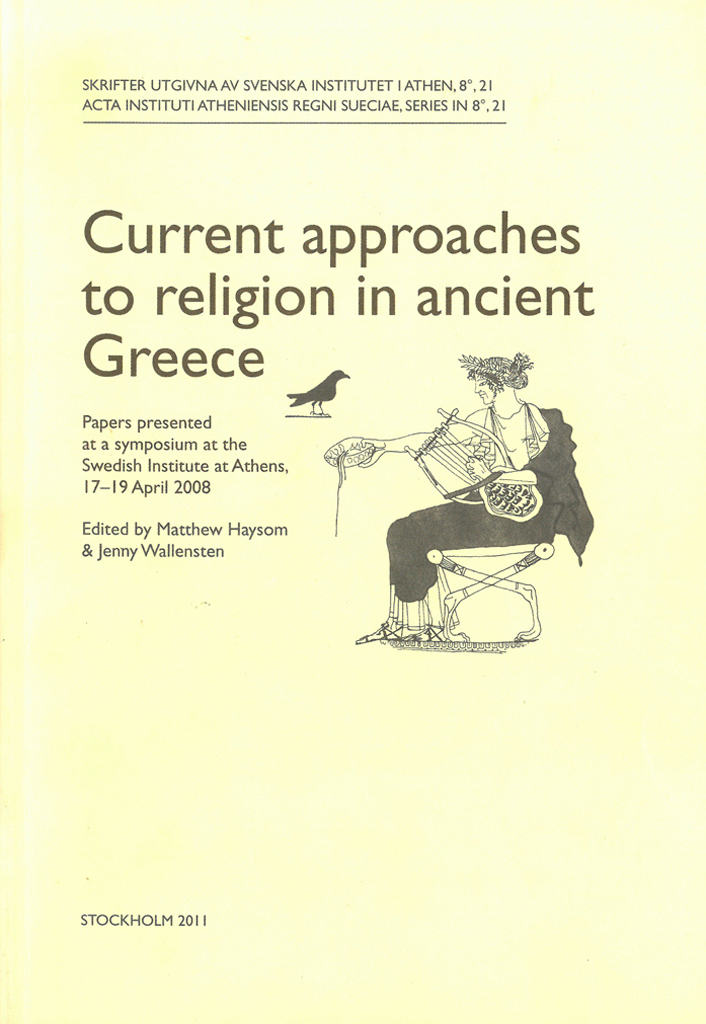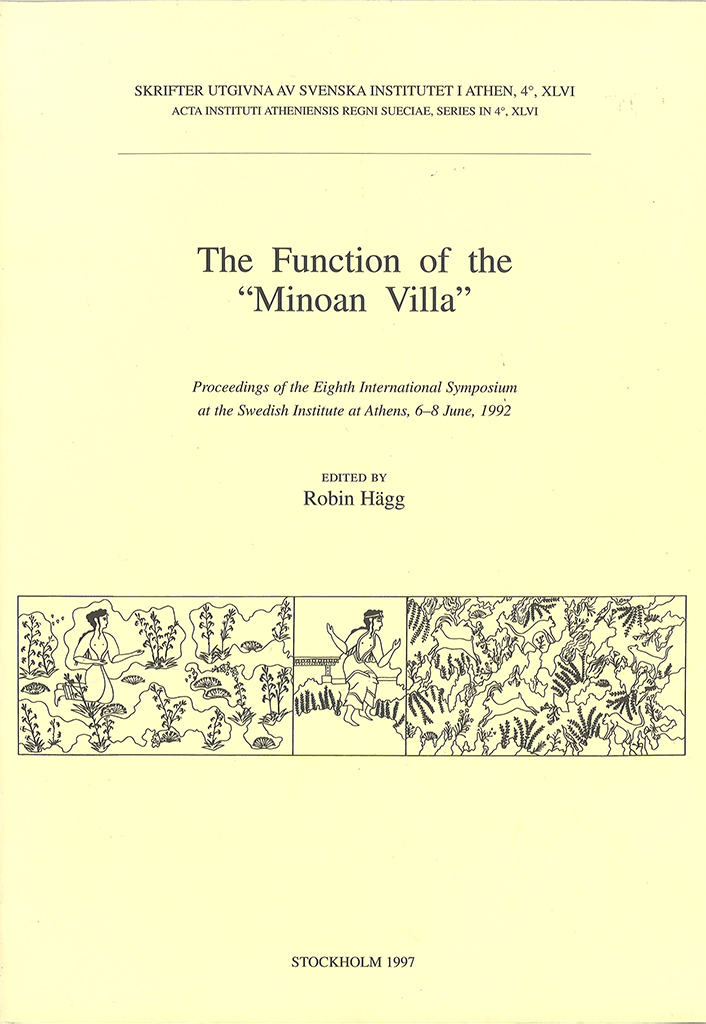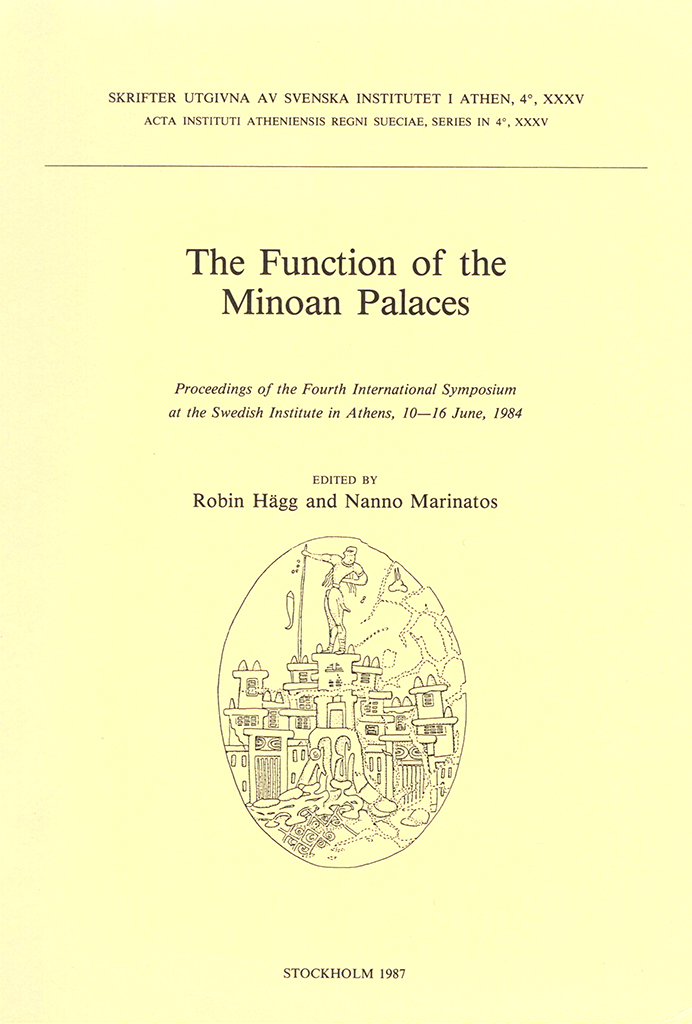Now available for purchase at Amazon.com, Amazon.de, Bokus.com, Adlibris.com, and Bokorder.se Current approaches to religion in ancient Greece. Papers presented at a symposium at the Swedish Institute at Athens, 17–19 April 2008 By Matthew Haysom & Jenny Wallensten (eds.) In recent years Greek religion has emerged as one of the main topics for the study of ancient Greek society as a whole. This flourishing interest is certainly due to the recognition of the centrality of religion to Greek culture: religious beliefs and practices were connected to almost every aspect of the Greek world. This volume brings together fourteen contributions from a group of upcoming international scholars, presented at a conference held in the Swedish Institute at Athens and the British School at Athens in 2008. The papers take a wide range of approaches: archaeological, epigraphic, iconographical, philological and historical. They demonstrate the diversity of the subject, covering such issues as nineteenth-century historiography, cult epithets, the pantheon, regionalism, polis religion, the performance of ritual, the use of music in ritual, the accessibility of sacred space, and the visual aspects of dedications. The contributions bring new theoretical perspectives, seek to better understand ritual, and highlight the variety of Greek religion. Contents Preface…
Published by the Swedish Institute at Athens. Distributed by Astrom Editions The function of the “Minoan villa”. Proceedings of the Eight International Symposium at the Swedish Institute at Athens, 6–8 June, 1992 Edited by Robin Hägg These twenty papers, presented at an international conference in Athens, deal with various aspects of the so-called villas in Neopalatial Crete and their possible predecessors or equivalents in the preceding, Protopalatial period. They are followed by transcripts of the discussions of the symposium. Among the problems treated are: the origin of the “villa system”, the definition of the “villa”, the architectural analysis of buildings and building complexes, the magico-religious background of the “villa”, the role of religious painting, the origin of the Cretan andreion, and a study of ceramic exchange between towns and outlying settlements in Neopalatial eastern Crete. Special discussions concern the functional analysis of the architecture, administration and bureaucracy, with special reference to seals, sealings and Linear A tablets and political geography. Contents ‘Preface’, 7 Henri van Effenterre & Micheline van Effenterre, ‘Towards a study of Neopalatial “villas”: modern words for Minoan things’, 9–13 Wolf-Dietrich Niemeier, ‘The origins of the Minoan “villa” system’, 15–19 J.A. MacGillivray, ‘The Cretan countryside in the Old…
View record at WorldCat. The function of the Minoan palaces. Proceedings of the Fourth International Symposium at the Swedish Institute in Athens, 10–16 June, 1984 Edited by Robin Hägg & Nanno Marinatos Fourty-seven papers on the functions of the palace, the most characteristic phenomenon of the Minoan Bronze Age civilization in Crete, read at an international conference in Athens; the papers are followed by transcripts of the discussion of the symposium. The papers are arranged in eight groups, discussing (1) background (Near Eastern and Egyptian economy), parallels (Mycenaean palaces) and methodology; (2) the emergence of the Cretan palaces; (3) the relations of the palace with town and territory; (4) recent archaeological finds; (5) the palaces as ceremonial and religious centres; (6) the palaces as centres of trade and manufacture; (7) the administrative systems of the Minoans and Mycenaeans; and (8) the function of the frescoes in the palace. For James Walter Graham and to the memory of Spyridon Marinatos. Contents Preface (p. 9) Background and methodology Benjamin R. Foster | The Late Bronze Age palace economy: A view from the East (pp. 11–16) Wolfgang Helck | The dissolution of the palace economy in the Ramesside period (pp. 17–19) Klaus Kilian…



